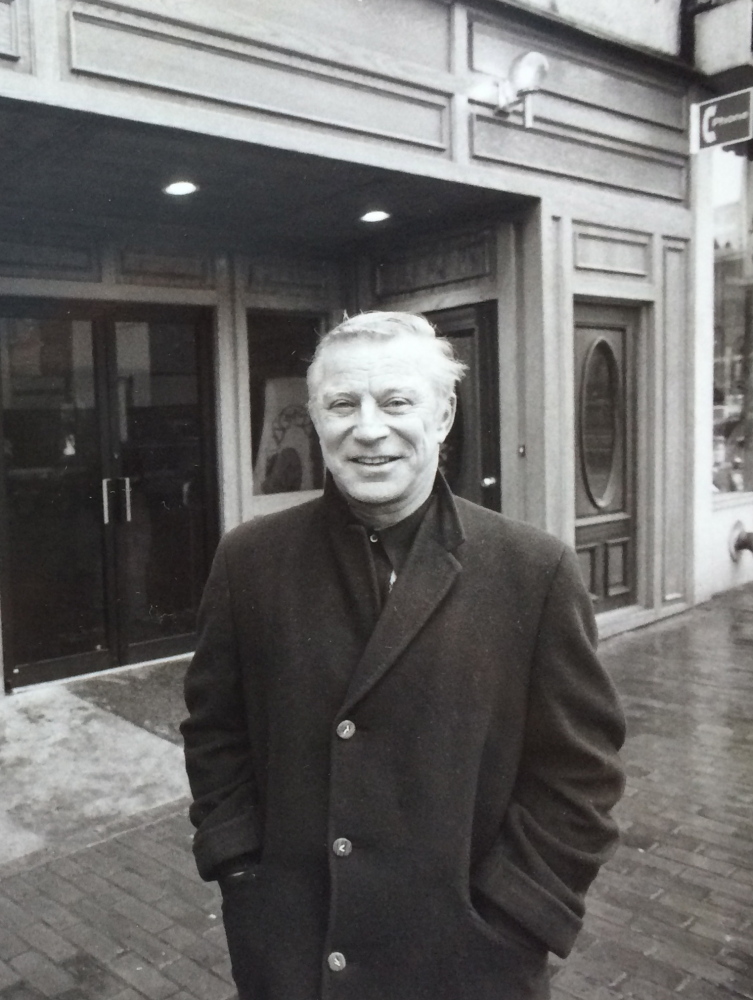Back when the idea of an Old Port Festival would have been laughable – who would have taken their children there in the 1960s? – Henry Willette saw the potential of the brick Victorian buildings lining Exchange Street, even though they were occupied primarily by rodents and the homeless.
Willette, who died in Portland on Tuesday at age 83, bought the building at 9 Exchange St. in 1967, opened The Candle Shop and subsequently bought other buildings in the Old Port that were ripe for renovation and re-use, setting the area on a path that led to its position today as one of the region’s most vibrant commercial areas.
This weekend, thousands of people will be drawn to the area by the annual Old Port Festival, which has been expanded to three days.
But before its rebirth, “people wouldn’t come down to the Old Port because they thought it was scary,” said Sonya Robertson, who opened a restaurant supply company on Exchange Street in 1972 and later opened The Whip and Spoon, a popular retail kitchenware shop.
But Willette saw past the crumbling bricks, the broken windows, the homeless squatters and the dive bars, to a gem that was waiting to be discovered. When he quit his job as a city planner in 1970 to devote himself full-time to candle making and real estate development, he laid out his vision for the Old Port.
“That whole area has really just begun to move and can markedly transform the city in years to come,” he said. “It can be a specialty shopping center right in the heart of the city.”
Within a decade, his vision was a reality, with quirky shops and restaurants lining Exchange Street and spreading onto adjacent Fore, Market and Middle streets.
Paul Stevens, a longtime friend, said Willette’s role in the Old Port’s development has been largely overlooked.
Much of the credit is given to Frank Akers, a developer in the 1970s and ’80s who made millions by revitalizing the area, but Stevens said Willette’s role as a pioneer in the area isn’t as recognized.
“He’s gotten little credit for it, but he’s the one that really got it started down there,” Stevens said.
At the time when Willette saw a shopping mecca, many city officials saw an eyesore. There was much talk about tearing down many of the buildings along Exchange Street to create parking lots.
But the area started attracting companies with a need for warehouse space, and then Willette’s retail outpost, and the talk of widespread demolition faded.
Willette initially focused on the candle making, which caught his interest during a trip to Europe. The value of the real estate wasn’t in the forefront, Stevens said, which was apparent when Willette initially balked at asking the homeless man who lived on the third floor to leave – even though there was no heat or running water on the upper floors and the man used a hole in the third floor as a toilet.
“It was the first composting toilet, I think,” Stevens said.
Willette’s holdings soon grew, partly through need. His candle making factory on the second floor – the homeless man had been sent packing – caught fire, and the fire did significant damage to 9 Exchange St., which is now the home of Toko Indo, a jewelry and clothing store.
“I think the building inspector would have had a heart attack” if city officials had known about the factory, Stevens said.
When Willette rebuilt, he turned the upper two floors into an elaborate apartment for himself.
Willette bought a building on Fore Street – where Bull Feeney’s restaurant and bar now operates – and moved the factory there. The candle making took off, with retail spots in shopping malls throughout the Northeast.
Willette – then known as “the Candle King of Portland” – sold the candle business and much of his real estate in 1984. To illustrate just how much the Old Port had been transformed, he told the Portland Press Herald that he turned a tidy profit of $865,000 on two Old Port buildings that he bought.
Sonya Robertson said Willette had the unusual ability to look beyond what was in front of him every day to the potential of a building or neighborhood.
“That’s why Hank was such a visionary,” she said. “A lot of people from away who saw the Old Port and had seen places like Georgetown (in Washington, D.C.) got it, that this was a jewel waiting to happen. But when you grow up with it, you don’t see it anymore. Hank saw it.”
Stevens said Willette may deserve credit for more than helping to develop the area where this weekend’s festival is based. He said Willette would occasionally arrange for a horse and carriage to take visitors on rides down Exchange Street.
“That was the first real Old Port Festival,” he said.
Send questions/comments to the editors.





Comments are no longer available on this story